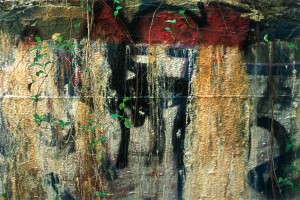Palm Beach Daily News (April 18, 2017): Photo centre’s Photography of Place goes beyond pretty pictures by Jan Sjostrom
Jewish Ledger (November 13, 2013): Painting with a camera:New Britain museum highlights Jewish photographer by Cindy Mindell
The Improvised Life (November 7, 2013): Fern Berman: “Turn Loss Into Something Else”
Connecticut Magazine (November, 2013): “Fern Berman’s Abstract Photography at the New Britain Museum of American Art” by Cathy Ross
From The Republican-American (October 13, 2013): “New Britain show defies the eye” by Tracey O’Shaughnessy:
“In images that Berman has offered with a focus at once steely and generous, the artist has brought forth depictions of the decayed and the discarded, transforming them into the graceful and transcendent.”
Read the full article here.
Live interview on WDRC’s Talk of Connecticut with Shelly Sindland (September 28, 2013): “Photographer Fern Berman Talks about her Exhibit at The New Britain Museum of American Art ”
………..
July 30, 2010
Fern Berman’s painterly images
Tracey O’Shaughnessy
Republican-American, Associate Features Editor
They only look like paintings.
Perhaps its the vividness of the color, the richness of the texture or the surprising revelation of the subjects themselves, but Fern Berman’s stunning series of photographs, on view at Good News Cafe & Gallery through Sept. 20, take your breath away.
That’s because once you get over the essential legerdemain [–] that these are color photographs and not abstract oil paintings [–] there’s another shocker in store. These vistas, with their ebullient, Matisse-like color and bracing, Kandinsky-like color contrasts, are ordinary splashes of color that we pass every day.
Some of these images are close-up examinations of flaking stucco paint on a wall. There are tiles and hub caps and the rusted rim of a cornflower blue window. They are, in other words, banalities, not only ordinary, but, in their way, sub-ordinary. But under Berman’s lens, they become sparkling, luxuriant meditations on beauty, the passage of time and the rich parenthesis of our visual culture that we otherwise overlook.
An image of what appears to be the front axle of a rusting car turns into a painterly evocation of light on an arc of gray. Above the rim, moss green hues bleed into irregular swaths of butterscotch, blotted with swabs of crimson.
It is not just the color, however, that makes these works so evocative. Berman manages to convey the sandpaper texture of the flaking paint, as well as the abrasive, splintering feel of blistered metal. Step closely and you see these visual haikus for the first time. Step away and an abstract landscape emerges.

Berman shoots film and prints on archival, typically watercolor paper. That is likely how she gets the opulence of color that define her work and gives it its lavish texture. Too, there is the composition itself. Berman has an eye for absurd juxtapositions as well as enigmatic, often surrealistic compositional swatches. This is particularly evident in a series of four images of what appear to be the same blot of graffiti on a wall.
Graffiti may be our most organic folk art, or it may be litter, but what Berman does to it suggests the color harmonies of Paul Klee. Berman captures the creamy mint green and turquoise orbs snuggling against the thick black lines of the words “Everything Fades.”
Well, yes it does, but the fading itself is a marvelously lucid, hypnotic whorl of color that Berman urgently articulates in these thoughtful compositions.
It would be incorrect to label Berman a travel photographer. But in works like “Amalfi,” and “Morocco” and “Sicily,” she conveys the ambience of a place merely by enlarging a corner of it.
So “Morocco” is a coppery tapestry of pyramid-like tiles. “Together in Peace” features bright Moorish tiles of blue, white and yellow bisected by the shadow of a cross.
More often than not, however, what you get in Berman’s photographs are bewildering landscapes of brittle, friable material, typically puckered or frayed, revealing earlier, older colors bleached away by time.
Perhaps that’s Berman’s way of reminding us how each of us lays a thin layer of ourselves which ultimately erode to reveal something earlier and more atavistic. Or perhaps it’s a reminder that corrosion itself is a kind of beauty. More than likely, though, it is the photographer’s gentle nudge to encourage us to look a little closer to see radiance in the neglected, moldering architecture that defines our lives.
